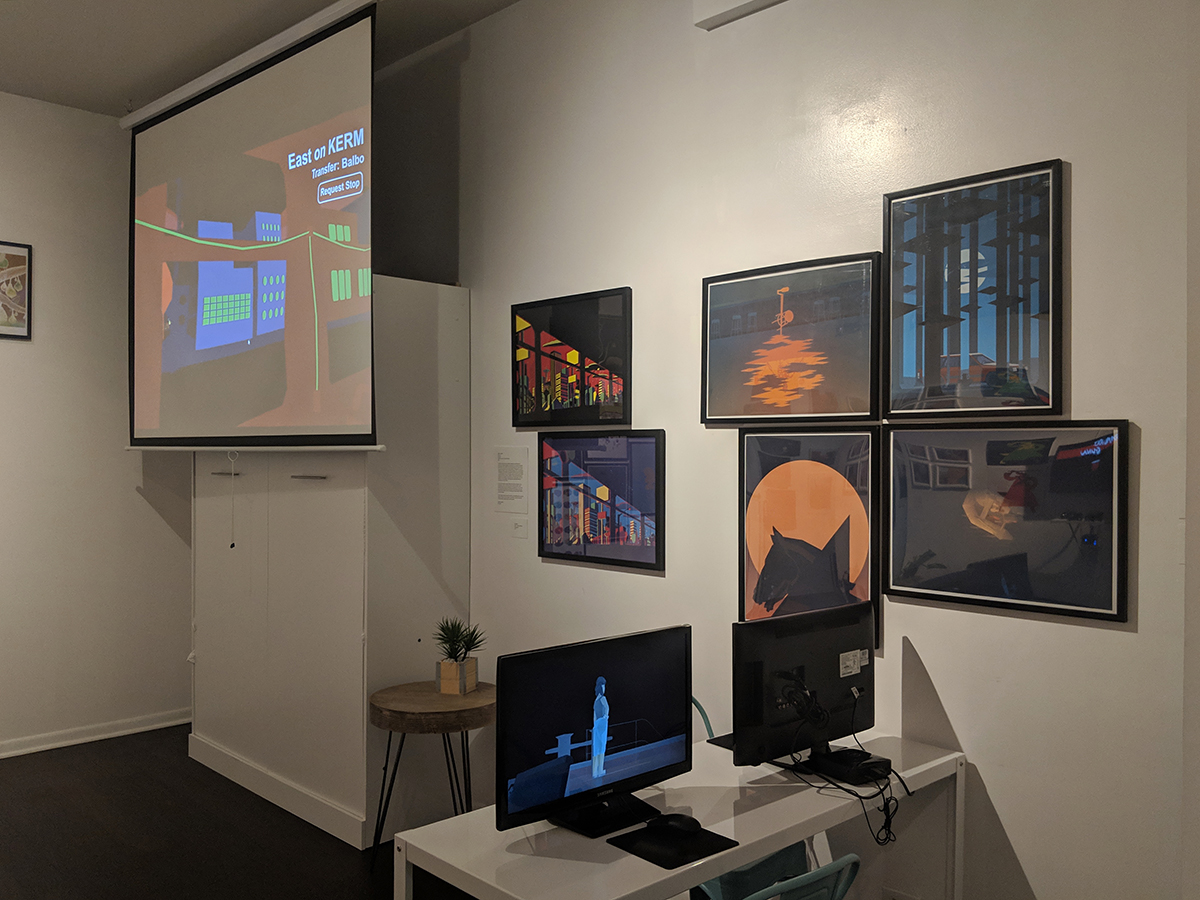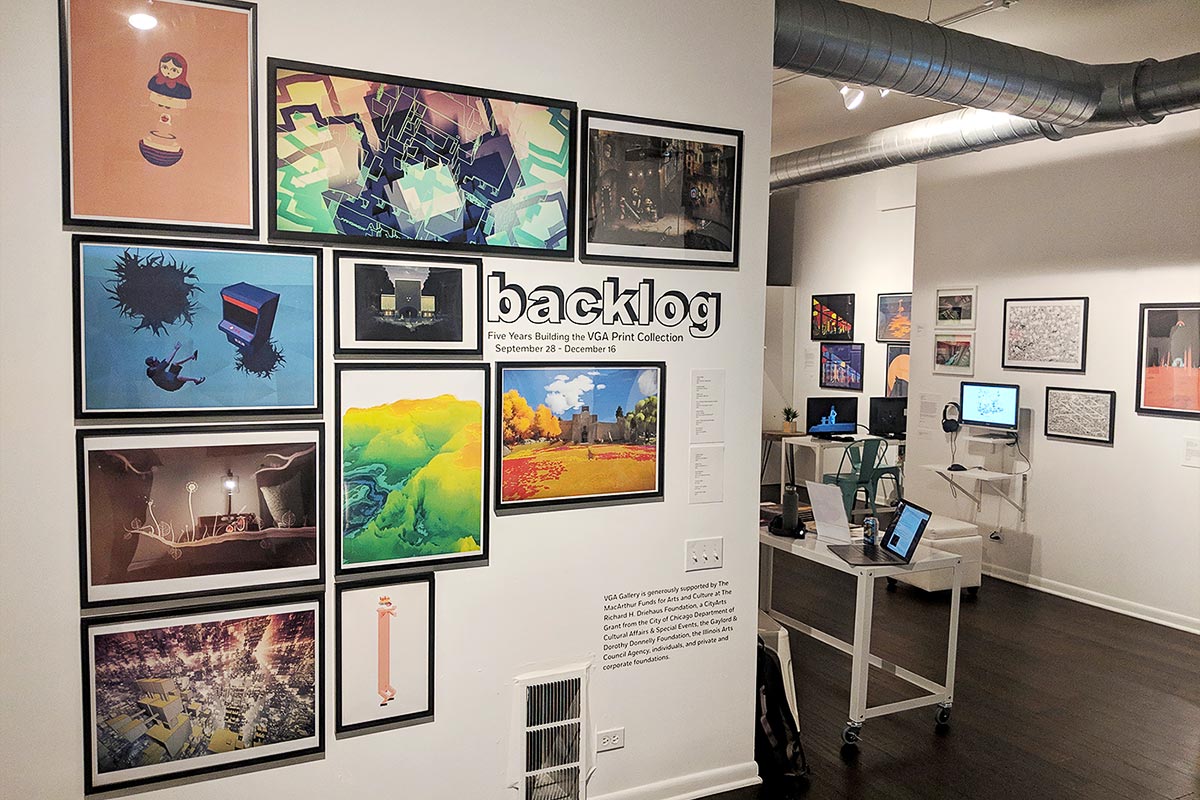Since their inception, video games have been stuck in cultural limbo. They’ve transcended the category of childhood pastime, but they haven’t been fully accepted as a respected art form. Founded in 2013, the Video Game Art Gallery in Logan Square has been trying to change that perception.
The cozy art space is the only one of its kind in Chicago. It's home to a growing collection of video game prints, which it is currently exhibiting to mark its five-year anniversary. For Backlog: Five Years Building the VGA Print Collection, its walls are adorned not with paintings or portraits, but with framed screenshots and concept art from video games, arranged in a salon-style display. Some images depict dreamy, watercolor worlds; others, nightmarish, steampunk cities.
“The games that are coming out are expressive and immersive experiences,” says Jonathan Kinkley, VGA Gallery’s executive director. “The time is right for this type of conversation. Art institutions are not exhibiting or collecting any games, so we’re filling that perceived need within the artistic landscape.”
Video games are designed to be interactive experiences, which may at first seem at odds with the gallery’s mission to immortalize titles in print. But the gallery's intent is not to substitute the experience of play.
Instead, visitors are invited to examine the media anew in the context of a gallery, whether by getting a glimpse into an artist’s process or taking a closer look at a game’s themes and mechanics. There are, however, a handful of titles available to play as well, including Superbrothers: Sword & Sworcery EP, a fantasy action-adventure stylized in retro 8-bit, and 4Ever Transit Authority, an interactive train commute through a city that is randomly generated in real time.

Kinkley curates the collection with VGA’s co-founder and exhibition director, Chaz Evans. “We select games that have artistic or cultural significance,” says Kinkley, “or is done by an artist in a very stylized manner.”
As a result, the collection is staggering, housing roughly 120 unique prints. This trove includes '90s classics like King’s Quest V, more recent, major releases like Jonathan Blow’s 2016 The Witness, and forthcoming games like Manifold Garden. Most prints actually feature artwork from Chicago-based independent studios and artists. Dateline: Bronzeville, for instance, developed by South Side designer Philip Mallory Jones, captures the mood of the Chicago neighborhood during the 1940s.
Before creating the prints, Kinkley and Evans have a conversation with each artist about the best shots from their game to feature, based on composition, colors, and whether they represent an iconic moment within the game world. For example, shots from The Witness, a 3D puzzle game set on a deserted island, feature the early puzzles where players get their first aha moment and learn how to solve the remaining challenges. Once the team selects a series of in-game screenshots or concept artwork, the images are fabricated in an open edition mass print or a giclée in limited editions of 20, available for purchase worldwide — with profits shared with the artist.
Backlog is more than an exhibit of video game art prints. It represents a major milestone for VGA Gallery, which Kinkley and Evans originally conceived as a pop-up shop. Since its inception, the gallery has exhibited prints at Galerie F, Columbia College Chicago, and the Chicago Comic & Entertainment Expo. Interest in their work grew substantially over the years, prompting Kinkley and his crew to open a brick-and-mortar space last August.
Sales of the prints from the collection have also supported the gallery’s steady growth, as have grants and visitor donations. There’s also a membership program, which rewards users who pay yearly dues ($50) with discounts and private access to exclusive events. And when the gallery is closed, the video projection screens slide up, a Murphy bed folds out, and the space is rented through Airbnb (with the art left hanging on the walls).
In fact, VGA Gallery’s biggest obstacle is not money, but time. Its staff is comprised of volunteers who each have full-time positions elsewhere. “But it’s a lot of fun, and that’s what keeps us going,” Kinkley says.
As the gallery’s audience has grown, so too have its exhibitions. This past year, it mounted shows about audio in games and on Cuba’s first independent video game. Backlog also coincides with the gallery’s largest exhibition yet, Chicago New Media 1973–1992, which is on display at a partner space, UIC’s Gallery 400, through December 15.
Last October, VGA Gallery, in partnership with Media Majlis at Northwestern University in Qatar, received a MacArthur grant to develop a virtual reality game that centers around citizen journalism in the Middle East. It has several exhibits lined up for 2019 as well.
“We want to reach as many people as possible,” Kinkley says. “Whereas a lot of the art world prices the public out of participating in the conversation, accessibility is very important to us. Ultimately, we want to tell important stories about video games since there aren’t other places where they’re being told.”
Backlog: Five Years Building the VGA Print Collection runs through December 16.




Comments are closed.